Building Collaboration
Project brings health care students under one roof
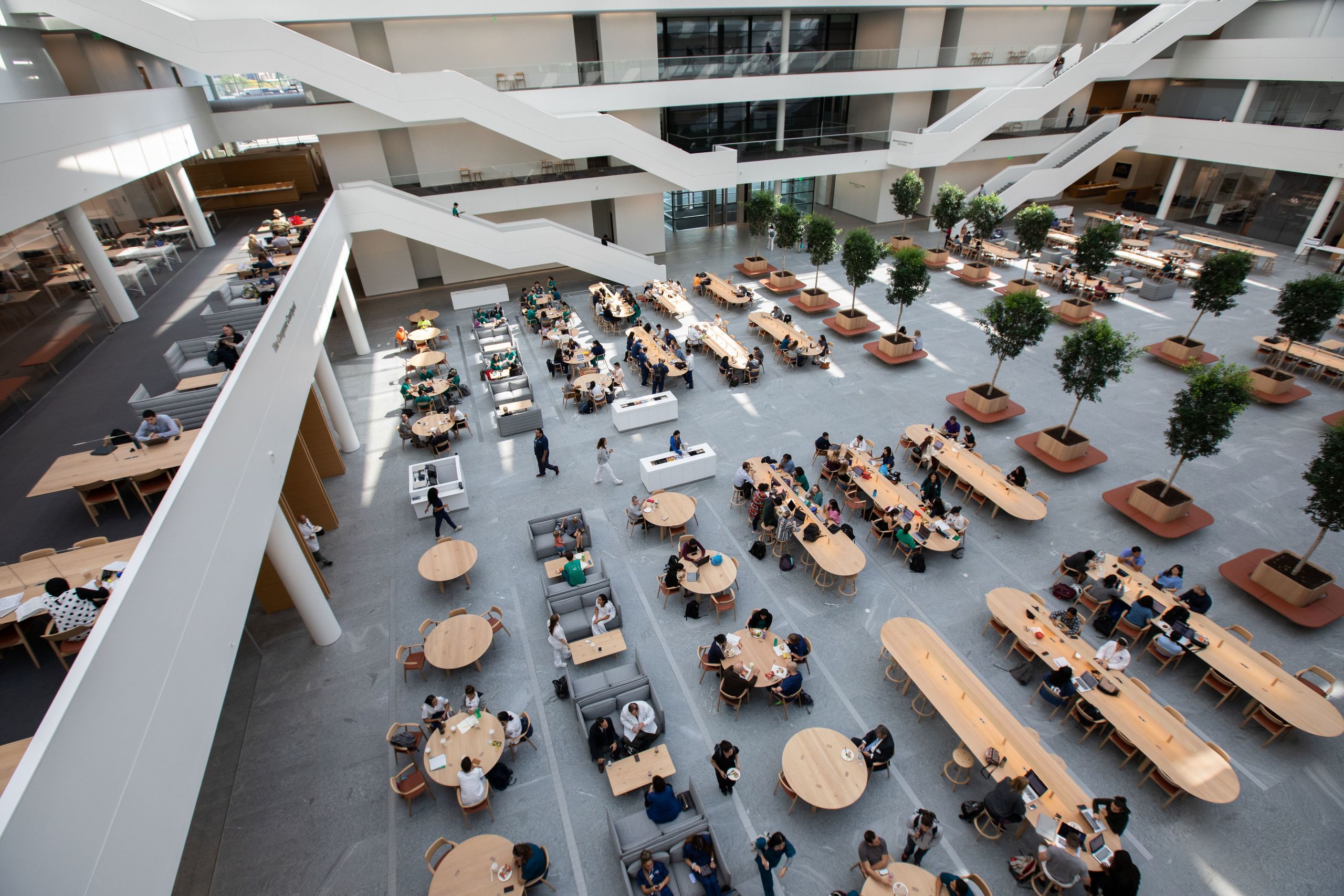
Medicine is a team sport.
The phrase was among Toby Cosgrove’s favorites during his days as Cleveland Clinic’s CEO.
Doctors, nurses, pharmacists, physician assistants, physical therapists and others—they all have to work together seamlessly for successful patient outcomes.
Yet to this day, the overwhelming majority of health sciences students still learn in separate spaces, with limited interaction with one another—in or out of the classroom.
As a Case Western Reserve University nursing leader once put it: “The way we educate health care professionals is like a football team that hasn't ever practiced together, yet they're expected to play at Super Bowl Sunday.”
Not anymore—at least not for this hospital and higher education institution.
Today, the two organizations can point to their new Health Education Campus, an ambitious project that brings together 2,200 students from the university’s nursing, dental and medical schools—including the Cleveland Clinic Lerner College of Medicine program.
With a 477,000-square-foot main building expressly designed for collaborative learning, the campus not only eliminates physical barriers among students, but also encourages informal engagement through shared dining and study spaces.
“It’s like you’re walking into an amazing dream,” medical student Jasmine Robinson said of the building’s centerpiece, a 27,000-square foot atrium.
Added nursing student Senna Clark: “You walk into the space and just want to connect with others.”
Starting with Students
Research shows that team-based care leads to better patient outcomes and satisfaction, not to mention a greater sense of fulfillment among providers.
“In order for us to meet the demands of our patients and their families,” explained Tom Mihaljevic, who became Cleveland Clinic’s CEO in 2018, “the best way to do it by is by working as a team.”
Yet, nationwide, translating that knowledge into meaningful action has proved painfully slow. Separate buildings are a big stumbling block, but so are curriculum, calendars—and, yes, culture.
Both Case Western Reserve and Cleveland Clinic began modest efforts in interprofessional education about a decade ago, but even these were distinct from one another. In fact, one of the most prominent early initiatives started with a Student-Run Free Clinic.
Launched in 2011, the project involved future doctors and nurses spending Saturdays seeing patients at a local free clinic. The approach—which also required students to recruit volunteer faculty preceptors—increased the nonprofit’s capacity, and provided invaluable experience.
“It's important that even early in our education we learn how to work in teams,” medical student Hiren Bhakta said at the time.
“I feel like my voice is heard when I'm in the team,” nursing student Alyssa Wagner said then. “They understand what I can bring to the table.”
Over time, generous grants from the Josiah Macy Jr. Foundation led to small faculty-led pilot projects that brought students together in clinical settings, and later, large sessions that drew together medical, nursing, dental, and social work students to work through hypothetical cases in teams.
Again and again, students left those conversations with new knowledge about their peers’ expertise.
“The social workers,” dental student Sarah Forsberg said, “they know where to get resources like no one else.”
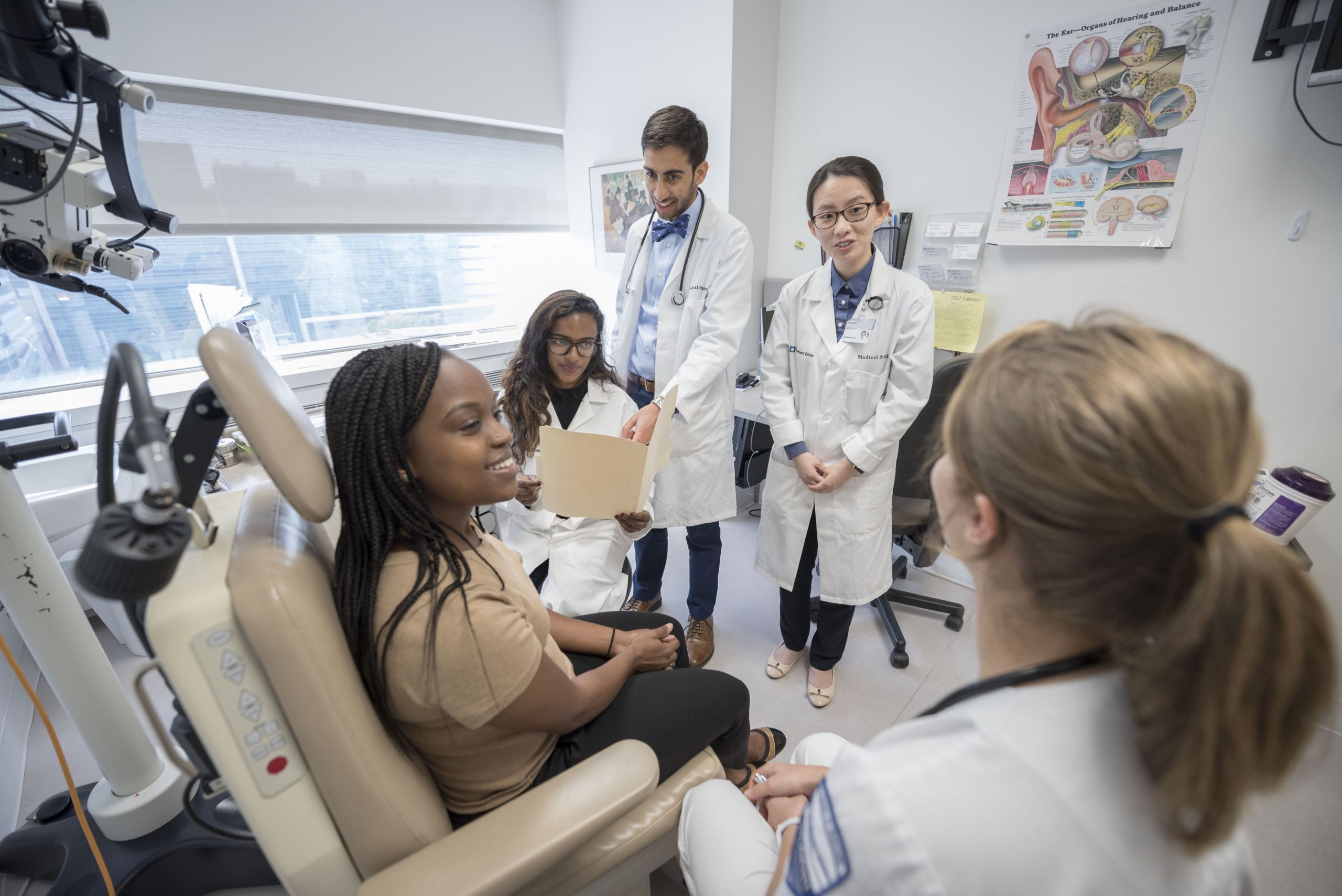
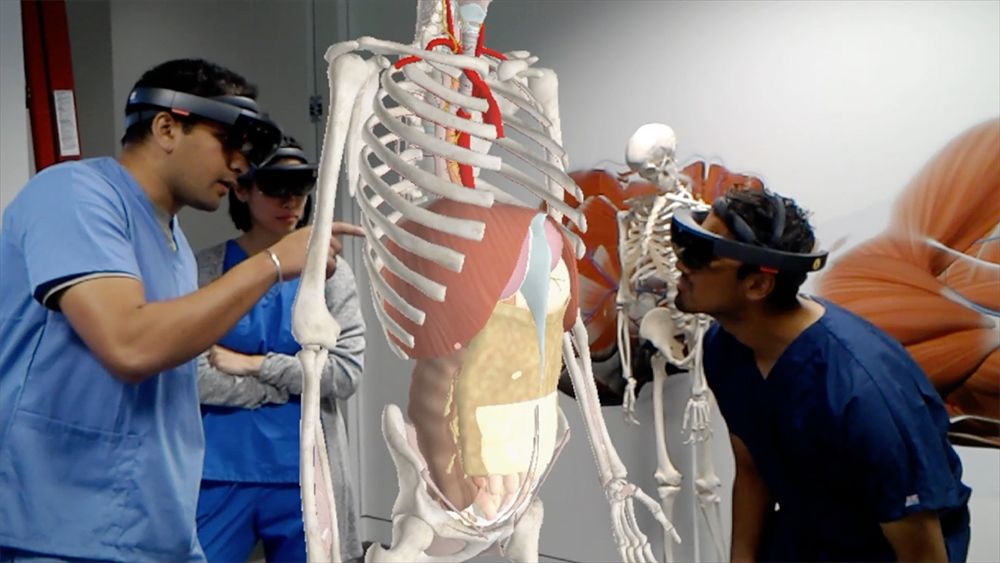
And Bringing Them Together
At first, the building project only involved the two medical programs, but Cosgrove—who stepped down as Cleveland Clinic’s CEO in 2017—and Case Western Reserve President Barbara R. Snyder specifically located it on the edge of a larger parcel to leave room for future buildings. As planning progressed, however, they quickly realized this collaboration offered an even greater opportunity.
“This project allows us to bring these future health care leaders together from the very start,” President Snyder said in announcing that the proposed building now would include nursing and dental education, “and to do so in a thoughtful and intentional way.”
Starting from scratch also allowed the two organizations to incorporate leading-edge design of simulation spaces—from a patient room for a typical office visit, to an actual ward with overnight patients, and even a helicopter where students experience turbulence while caring for a patient. The design also catalyzed the creation of a second building, a 132,000-square-foot dental clinic featuring 3D printers that allow procedures that would have required multiple appointments to be completed the same day.
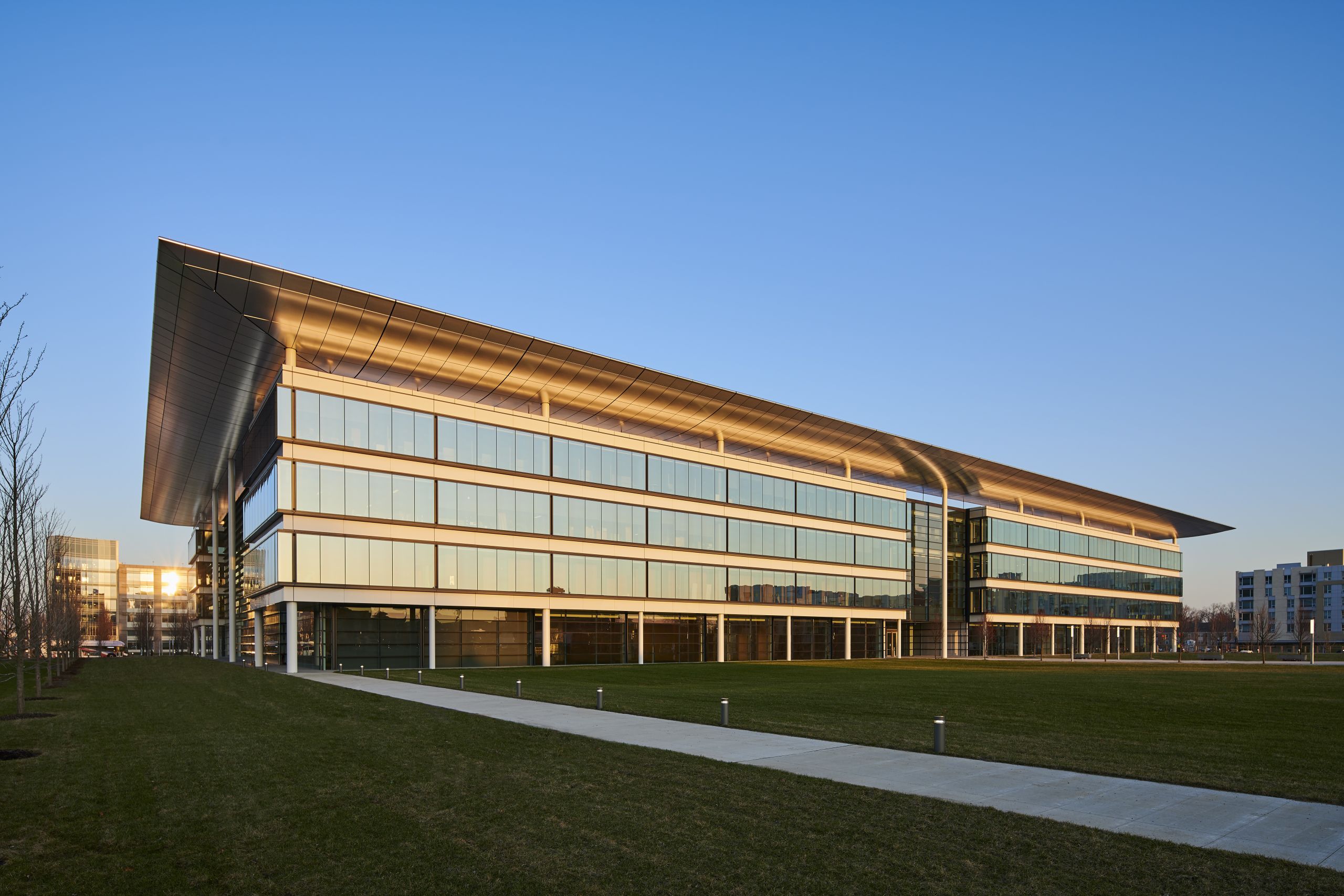
In addition, the project incorporates breakthroughs in technology. Cleveland Clinic partnered with Zygote Medical Education to develop a virtual anatomy curriculum for its Lerner College program, while the university’s medical program offers HoloAnatomy, an entire curriculum delivered through mixed reality.
Preliminary peer-reviewed studies showed the effectiveness of the mixed-reality approach, and student feedback has been overwhelmingly positive.
When the COVID-19 pandemic forced a transition to remote learning, HoloAnatomy unexpectedly provided another advantage. With assistance from Microsoft, the 185 first-year students received HoloLens devices at their homes, allowing them all to see the same anatomical image simultaneously as Professor Susanne Wish-Baratz discussed organ and system functions.
“Let’s take a look inside the human body,” Wish-Baratz said during the university’s first remote anatomy class March 26. “We begin with the thoracic cavities…”
Leading Forward
While various interprofessional education programs the university and hospital initiated over the past decade each offered individual lessons, they collectively underscored a critical point: making the most of this partnership required true coordinated leadership across all of the schools.
Enter Tyler Reimschisel, Case Western Reserve’s founding associate provost for interprofessional education, research and collaborative practice. Appointed last year after a national search, Reimschisel previously served as a division leader at Vanderbilt University Medical Center and led interprofessional collaborations at the hospital, city and state levels. In addition to beginning smaller new programs for students this year, he’s building toward an audacious goal, ideally for the next academic year: engaging 600 entry-level students in interprofessional teams working at clinical and community sites across the region.
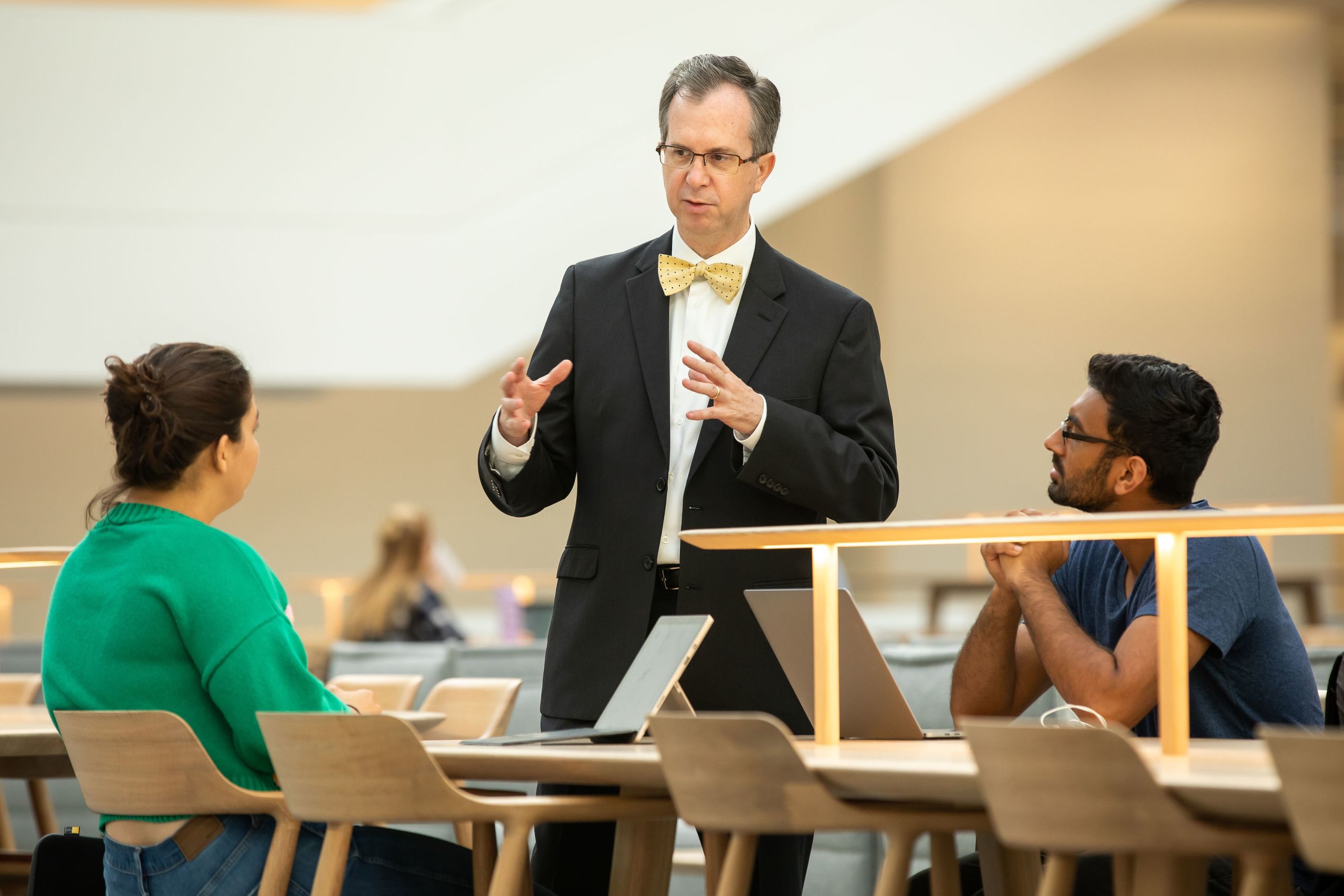
“This partnership provides an opportunity for us to transform health education,” Reimschisel said, “in ways that can lead to profound improvements for patients, families and communities. I am honored to be here.”


